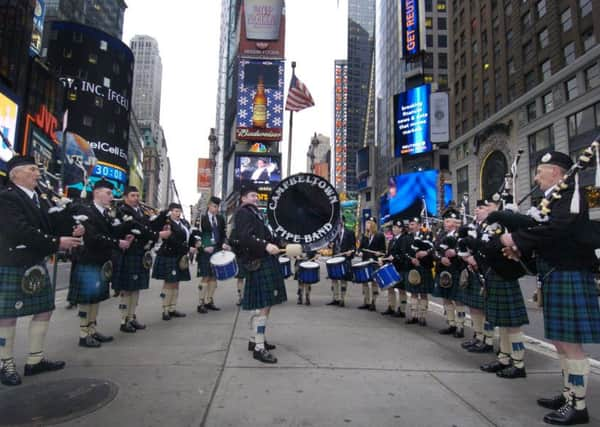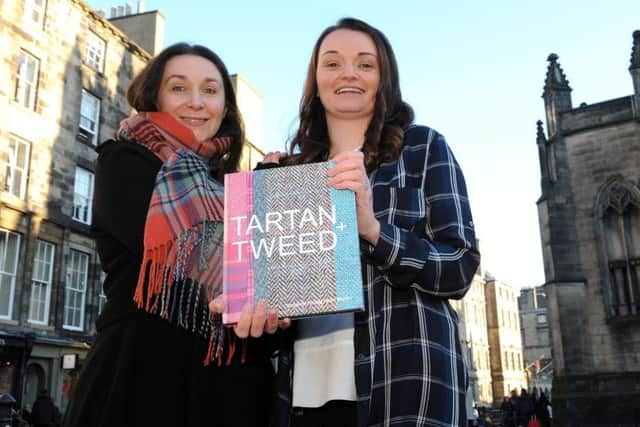The stories behind 7 of Scotland's most popular tartans


As a Scottish cultural export, tartan is right up there with whisky, shortbread, and, its closest allies, the kilt and bagpipes.
We picked the brains of author and reliable voice on all things tartan and tweed, Caroline Young, to discover the fascinating stories behind seven of Scotland’s most popular tartans.
The Royal Stuart tartan


Advertisement
Hide AdStewart tartan has rock‘n’roll status as a fabric worn by punks, pop and glam rock stars, and is probably the most recognisable tartan in the world. There are in fact more than a hundred Stewart tartans registered in the Tartan Index but the Royal Stewart is the most prolific - its red, green and white stripes are printed on shortbread tins and Scotch bonnets, while the Dress Stewart, with its prominent white overstripes, is commonly used for more formal wear. Royal Stewart tartan was perhaps the preferred fabric for punks because it was so easily available from charity shops and bargain bins. The Royal Stewart is the queen’s official tartan, while also championed by rebels during the Jacobite uprisings, who fought for the House of Stewart.
The Black Watch
Also known as the Government tartan, the Hanoverian tartan and the Universal tartan, the blue, green and black checks of the Black Watch have made an impressive sight over the centuries when worn in battle. The Highland regiments, with their kilts and Glengarry bonnets, were sent on overseas campaigns to defend the British colonies in North America and India, and to fight in the Battle of Waterloo, the Crimean War and the First and Second World Wars. The Black Watch can be traced back to 1725 when the government set up six independent companies to patrol areas of the Highlands to prevent cattle rustling, often used for blackmail. They were instructed to wear similar green, blue and black tartans to keep a sense of uniformity, and it became known as the Government tartan by 1739. Because three of the six original regiments were under Clan Campbell, the Black Watch tartan would later be adapted as the clan tartan of the Campbells and officially adopted by the Black Watch Highland Regiment in 1881 until it was disbanded in 2006, and stripped of its identity.


MacQueen tartan
With its vivid red, black and yellow sett, MacQueen tartan is one of the most striking and with its links to the bold red tartans in Jacobite portraiture, it has taken on a rebellious reputation. Alexander McQueen often used a slight adaptation of the MacQueen tartan to signify Scottish rebellion against oppression following the Jacobite uprisings. With his Highland Rape collection in 1995, McQueen subverted the clanship symbol of tartan through violent imagery, with slashed and bloodied fabric to present the ‘rape’ of Scotland by greedy landowners in the eighteenth and nineteenth centuries. McQueen also saw the tartan as a link to his own history, traced to the Isle of Skye, where the Clan MacQueen defended their land and family. The MacQueen clan are of Viking origin, when Norsemen settled on the Hebrides in the ninth and tenth centuries. With a heritage born from the powerful Gaelic Clan Donald, they formed a confederation with the MacDonald and MacKintosh clans called Clan Chattan. It is said that the MacQueens were guards at the marriage between the daughter of the chief of Clan Ranald and the chief of Clan MacKintosh.
MacLeod tartan
The bright yellow and black of the MacLeod tartan is bold, vibrant and commands attention, making it the choice of tartan for fashion designers who wish to make a daring statement. The MacLeod of Lewis yellow and black checks with the red stripe is even known as ‘loud MacLeod’. For a more muted version, the MacLeod Hunting tartan has green and blue checks with a red and yellow stripe. The MacLeod clan are from the Isle of Lewis, coming from the Vikings who arrived in the Outer Hebrides and Skye in the eleventh century, and were descended from Leod. By 1829, during the fashion for recording clan tartans, MacLeod of Dunvegan claimed this tartan as the MacLeod clan tartan, with its ‘three black stryps upon ain yellow fylde.’
Balmoral tartan
The Balmoral tartan was created to complement the Royal Stewart and Hunting Stewart tartans used to decorate the interior of Queen Victoria and Prince Albert’s home on the Balmoral estate. Designed by Prince Albert himself in 1853, the sett has a grey background (said to represent the granite found in Royal Deeside) and features red and black checks with black and white thread twisted together through the background to achieve a textured appearance. The royal couple fell in love with their residence at Balmoral and spent a substantial amount of time there, meanwhile promoting the Highland activities in their midst. Traditionally the Balmoral tartan can only be worn by those of royal lineage and Queen Elizabeth II is often photographed in Balmoral tartan skirts. One notable exception to the rule is the Queen’s personal piper who often wears Balmoral tartan for ceremonial occasions.
Fraser tartan
The Fraser tartan was listed in the Sobieskis’ Vestiarium Scoticum and according to the Scottish Register of Tartans is in fact ‘an early Grant tartan traced to a portrait of Robert Grant of Lurg (1678–1771) hanging at the Troup House before it was closed around 1894. The clan is divided into two main branches – The Frasers of Lovat (Inverness-shire) and The Frasers of Philorth (Aberdeenshire). The Frasers of Lovat tartan was reportedly woven by Wilson’s of Bannockburn around 1820 and is slightly different from the original Fraser tartan. The Fraser Hunting tartan is thought to have relatively obscure origins, having been woven by the Sobieski Stuarts, who were reportedly commissioned by Lord Lovat. Rather than being taken directly from their Vestiarium Scoticum, this particular tartan was specifically altered in shades of brown at the request of their benefactor for military use.
Bruce of Kinnaird
Advertisement
Hide AdWorn by a branch of the Bruce clan, this tartan was taken from an eighteenth-century coat owned by the Bruces of Kinnaird. Authorised for wear around 1953 by Lord Bruce of Kinnaird, this sett is influenced by both the Old Bruce tartan and the Prince Charles Edward Stuart tartan. James Bruce of Kinnaird was a respected explorer who reportedly discovered the source of the Blue Nile and was nicknamed ‘The Abyssinian’. More recently this colourful tartan has been favoured by fashion designers who are attracted by its vibrant shades of khaki green, orange, pink, white, yellow and black. It was most famously used by Vivienne Westwood for an Ancient Bruce of Kinnaird tartan dancing jacket that appeared on Westwood’s first British Vogue cover in November 1989. Later in 1993, Westwood’s Anglomania autumn/winter collection featured several Bruce of Kinnaird tartan pieces including an eye-catching, double-breasted coat, waistcoat and trousers.
• The above information is an excerpt from Tartan + Tweed (Frances Lincoln) by Caroline Young and Ann Martin.
• Caroline Young’s latest book, Roman Holiday: The Secret Life of Hollywood in Rome (The History Press), is out now.
